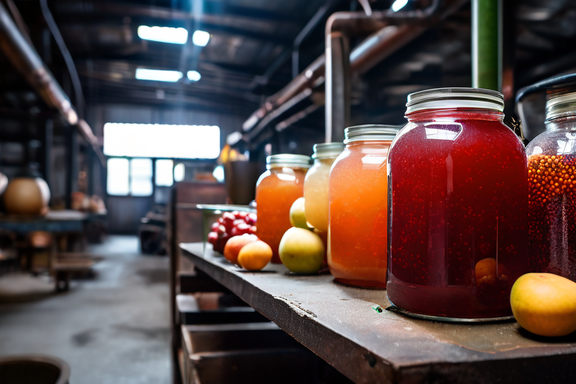The Magic of Fermentation: Exploring the Science and Culinary Wonders
Decoding Fermentation: A Microbial Symphony
By metabolising through fermentation, microorganisms (usually a bacterium, a yeast or fungus) harvest energy in the form of adenosine triphosphate (ATP) by converting sugars and other organic molecules to alcohols or acids (eg, carbon dioxide, lactic acid, etc); or, to gas (eg, ethyl alcohol, CO2 and other mixtures of gas) GRAIN. Wine sludge as a by-product of wine production offers an obvious source of dietary fibre. While it is true that fining by-products are rich in proteins, fat and phosphorus, Champoux notes that they also contain minor contaminants from the production process that need to be adequately filtered out or removed before being fed to livestock, as otherwise it could lead to sickness or even death in the animals. Furthermore, the animals themselves would have to be slaughtered to prevent tainted meats from entering the food channel. Additionally, there is another potential option to convert the remaining solid by-products into valuable products through incineration, anaerobic digestion with methane production, or even by recycling the calcium compounds into various chemicals products for the construction industry, as calcium becomes a valuable resource.
Mechanisms of Fermentation:
Anaerobic circumstances: Fermentation is an anaerobic process, which literally means it does not require oxygen to obtain or create nutrients in biological metabolism. Organic substrates can be fuel for microorganisms fermenting energy.
Substrate Utilisation: bacteria reduce large organic molecules (eg, sugars) to smaller compounds, releasing energy in the process.
Types of Fermentation:
Alcoholic fermentation: Yeast cells convert sugars into alcohol and carbon dioxide, a process that fuels the manufacture of beer, (Good) wine, and (Great) bread.
Lactic Acid Fermentation: Bacteria convert sugars into lactic acid. Products: yogurt, cheese, sauerkraut.
Applications of Fermentation:
Food and Beverage Production: From bread, beer and wine to yogurt and kimchi, all manner of staples become even tastier and more textural after getting the bacterial treatment, while fermentation can also act as a preserving agent.
Biofuels: Microbes convert plant matter into biofuels such as ethanol.
Biotechnological Advancements:
Pharmaceutical Production: Fermentation produces valuable pharmaceuticals like antibiotics and insulin.
Enzyme Production: Microbes generate enzymes used in industries such as textiles and detergents.
Health and Nutritional Aspects:
Probiotics and Gut Health: Fermented foods containing probiotics support gut microbiota and digestive health.
Nutrient Enhancement: Fermentation can increase nutrient availability and improve the bioavailability of certain compounds.
The Science Behind the Magic:
Microbial diversity: Each of these fermentation types reflects the presence of different microorganisms.
Control and Optimization: Scientists manipulate fermentation conditions to achieve desired outcomes, ensuring consistent quality.
Unleashing the Potential of Microbial Alchemy
That’s because, in the end, fermentation itself is an homage to the incredible abilities of microbes to tease an endless stream of value out of very simple ingredients. Regardless of whether it occurs in the kitchen, the factory or the lab, fermentation remains a vital component of the human-microbe symbiosis. The more microbes can expose the magic of this process, the better we will take advantage of the extraordinary technology of fermentation to feed us, continue to invent new products, or even help address some of mankind’s greatest problems. The more we understand the science behind fermentation, the more we’ll be able to engage the biological, chemical and culinary synergies that make it useful for spurring human development.

